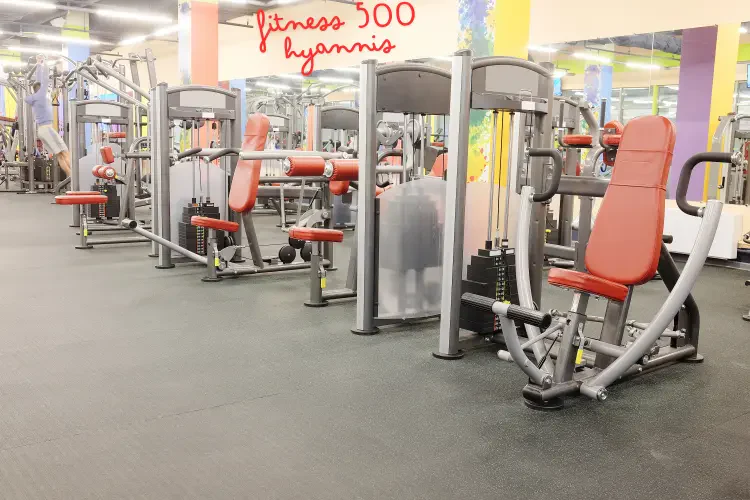Massage therapy is widely recognized for its effectiveness in fostering relaxation, diminishing stress, and alleviating pain. Notably, sports massage vs. deep tissue massage stand out for their therapeutic effects, particularly in promoting physical health and aiding muscle recovery. This article offers a comprehensive examination of the physical benefits associated with each massage type, emphasizing their unique techniques and the specific advantages they provide.
Sports Massage vs. Deep Tissue Massage
Insights into Sports Massage
Overview and Techniques
In Sports Massage vs. Deep Tissue, Sports massage is specifically designed for individuals who regularly engage in physical activities. It targets the body parts most susceptible to stress from repetitive and often vigorous movements. Techniques such as effleurage (stroking), petrissage (kneading), compression, gliding, stretching, and trigger point focus are employed to enhance flexibility, minimize fatigue, boost endurance, and prevent injuries.
Principal Benefits
- Enhanced Flexibility: Frequent sports massages help increase mobility by stretching tight muscles and the surrounding connective tissues.
- Injury Prevention: Improving blood circulation and easing muscle tension contributes to reducing the risk of sports-related injuries.
- Performance Enhancement: Athletes can achieve better performance through regular muscle and tissue conditioning.
- Accelerated Recovery: Enhancing the flow of blood and lymphatic fluids aids in the rapid elimination of toxins and speeds up the healing process of injured or strained muscles.
Exploring Deep Tissue Massage
Definition and Techniques
Deep tissue massage applies sustained, intense pressure using slow, deep strokes to target the deeper layers of muscles and connective tissues. This approach is effective in breaking up scar tissue from injuries and alleviating deep muscle tension. The techniques often involve using fingertips, knuckles, hands, elbows, and forearms to deliver the necessary pressure.
Key Benefits
- Chronic Pain Management: Deep tissue massage is effective in alleviating chronic pain, improving blood circulation, and enhancing bodily functions.
- Inflammation Reduction: The intense pressure contributes to decreasing inflammation by boosting blood flow to critical areas.
- Scar Tissue Reduction: Regular sessions can gradually break down and eventually eliminate scar tissue, improving flexibility and motion.
- Stress Alleviation: Despite its intensity, deep tissue massage helps reduce stress by lowering cortisol levels.
Technique Comparison and Distinctive Benefits
Techniques and Their Applications
Both massage styles utilize similar strokes; however, sports massage typically includes more dynamic stretching and movement techniques, ideal for athletes and active individuals. Conversely, deep tissue massage focuses intensely on alleviating pain and resolving chronic muscle tension.
Benefits: Overlap and Differences between sports massage vs. deep tissue
Both methods aim to improve circulation, relieve stress, and promote relaxation. Nonetheless, their applications and results vary distinctly. Sports massage is best suited for those actively involved in sports or physical activities, aiming to optimize muscle condition and prevent injuries. Deep tissue massage, on the other hand, addresses deep-seated muscle issues and chronic pain that may affect long-term mobility and comfort.
When to Choose Between Sports massage vs. Deep Tissue
Deep Tissue Massage
Best for:
- Chronic Pain Relief: It addresses deep layers of tissue, ideal for persistent pain from muscle tension, injuries, or conditions like arthritis.
- Mobility Improvement: By breaking down scar tissue and reducing muscle adhesions, it enhances flexibility and movement.
- Stress Reduction: Effective in significantly lowering stress levels, which may also reduce blood pressure and improve heart health.
- Postural Issues: Beneficial for individuals experiencing pain related to posture problems.
Sports Massage
Best for:
- Athletes and Active Individuals: Tailored to prevent and treat injuries, enhancing athletic performance.
- Event Preparation and Recovery: Warms up muscles before exertion and decreases recovery time, aiding effective training and performance.
- Flexibility and Circulation: Promotes flexibility crucial for athletic performance and improves circulation for better endurance and reduced fatigue.
Considerations for Selection
- Personal Health Goals: Choose based on whether you aim to relieve deep tension or enhance sports performance.
- Pressure Sensitivity: Deep tissue massage involves significant pressure, which might not suit everyone’s comfort level.
- Activity Frequency: Regular sports massages can help maintain muscle health and prevent injuries for those frequently engaged in physical activities.
Conclusion
Both sports massage and deep tissue massage provide substantial physical benefits that significantly improve quality of life, whether for athletic purposes or managing chronic pain. Selecting the right massage depends on individual health needs and goals. A professional consultation can assist in choosing the most suitable massage therapy to support your wellness objectives.




